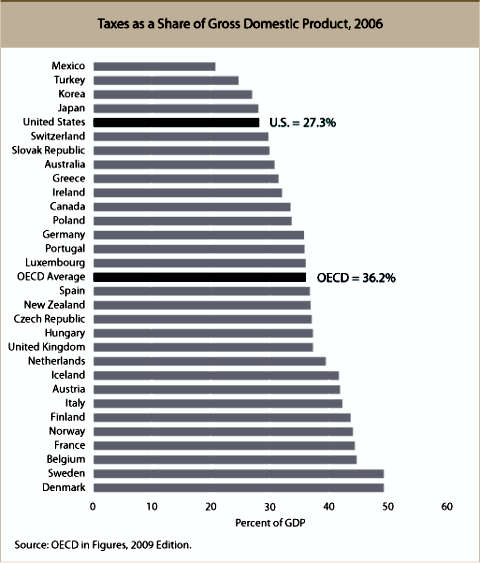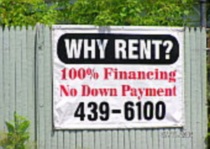MSN.com 4/25/20 By MSN Money staff
The best and worst states for taxes
Where you live can make a big difference in how much you pay in taxes.
States may use similar methods to fund their budgets — taxes on income, sales, property, fuel, alcohol, tobacco — but each does so its own way.There are 50 states in the union and, there are 50 different formulas for collecting taxes. For example, only seven states do not assess income taxes. The other 43 states do gather income taxes along with other taxes.
In five states you won’t pay state sales tax. But in 45 states, there may be local taxes on top of the sales taxes. Alaska is lowest in gas taxes, with California at the top, taxing gas at 48 cents a gallon. Missouri, charges smokers just 17 cents a pack; but avoid New York, which charges $4.35. Washington State spirits are taxed at $26 a gallon.
There are countless other ways to incur, avoid or defer taxes. Each state also sets its own formula for estate, property and inheritance taxes, as well as taxes on Social Security and pension income.
Even two people making the same salary and living in the same neighborhood, will pay different taxes. If a house is worth more, the property taxes are higher. Buy fewer goods and services and save on sales taxes. Car choices and personal habits also impact tax burdens. Don’t smoke and don’t pay anything in tobacco taxes.
Higher taxes on the way
If you think you’re paying too much in state and local taxes now, hang on. Experts say huge state budget shortfalls created by the nationwide economic slump are forcing states to demand more taxes. Sin taxes are already rising, but states will seek additional sources of revenue.
State governments are legally bound to balance their budgets. They’ve got to reduce services or increase revenue. Many states have created lotteries. Josh Barro, an economist with the Tax Foundation, a nonpartisan tax research group in Washington, D.C. says, “The states see it like free money.”
Taxes on rental cars and hotel rooms will continue to be a favorite target. If you don’t live in the state, you can’t vote out the politicians who create the taxes, so such taxes are “politically one of the easiest things to do,” Barro says. While, raising income taxes on the wealthy could backfire if those people move out of the state. But, a recession is the worst time to raise taxes, because people cannot afford them. However, expect tax the coming tax increases to go away anytime soon. There’s nothing more permanent than a temporary tax increase.
See the entire article at: http://money.msn.com/taxes/the-best-and-worst-states-for-taxes.aspx?GT1=33005
********************
Coach Mitch’s REFLECTIONS™
High taxes are everywhere
Check this study out. http://www.taxpolicycenter.org/briefing-book/background/numbers/international.cfm It shows that current USA taxes are at 27.3% of our entire Gross Domestic Product. Europe is above 40%.
Big power and big money take over in 1913
This chart shows the drastic change in government spending from one era to the next. http://www.taxfoundation.org/files/tfd_history-1900-2011.pdf See how little a tax bite the government took in 1900! Then there is a big jump in spending after the Fed is created. Then, the spending spigot was open and the party was in full swing. Imagine, our Founders felt compelled to revolt when taxes were at 2%. Now they are consistently about 30%. We just took on the mandatory taxpayer financing of healthcare.
Compare today’s taxes to 1900
Tax Freedom Day denotes the date after which you work for yourself and no longer pay taxes. The comments are the editors thoughts.
Tax Freedom Day – All Taxes Taken as a Percentage of Income
1900 January 22 5.9% Very little taxation – people could support large families, on $2 / day
1910 January 19 5.0% Even lower taxation.
1920 February 13 12.0% The Income Tax law and the Federal Reserve in effect since 1913. World War 1.
1930 February 12 11.7% Depression
1940 March 7 17.9% War preparations
1950 March 31 24.6% Tranquility?? Baby-boomers born. Korean War on horizon.
1960 April 11 27.7%
1970 April 19 29.6% Vietnam and Great Society programs
1980 April 21 30.4% Recession
1990 April 21 30.4% Savings and Loan debacle from real estate run up in mid 1980’s.
2000 May 1 33.0% Recession
2001 April 27 31.8% War in Afghanistan
2002 April 17 29.2%
2003 April 14 28.4% War in Iraq
2004 April 15 28.5%
2005 April 21 30.2%
2006 April 24 31.2% Housing / Stock Market rise
2007 April 24 31.1%
2008 April 16 29.0% Banks force government bailouts, record foreclosures and bankruptcies
2009 April 8 26.6% Banks force more government bailouts, record foreclosures and bankruptcies
2010 April 9 26.9% Deep recession, continued foreclosures and bankruptcies
2011 April 12 27.7% Deep recession, continued foreclosures and bankruptcies
Bailouts
This chart shows the all bailouts that our national government has done. http://www.propublica.org/special/government-bailouts
Industry/Corporation – Year – What Happened – Cost in 2008 U.S. Dollars
- Penn Central Railroad 1970
In May 1970, Penn Central Railroad, then on the verge of bankruptcy, appealed to the Federal Reserve for aid on the grounds that it provided crucial national defense transportation services. The Nixon administration and the Federal Reserve supported providing financial assistance to Penn Central, but Congress refused to adopt the measure. Penn Central declared bankruptcy on June 21, 1970, which freed the corporation from its commercial paper obligations. To counteract the devastating ripple effects to the money market, the Federal Reserve Board told commercial banks it would provide the reserves needed to allow them to meet the credit needs of their customers. (What happened after the bailout?) $3.2 billion
- Lockheed 1971
In August 1971, Congress passed the Emergency Loan Guarantee Act, which could provide funds to any major business enterprise in crisis. Lockheed was the first recipient. Its failure would have meant significant job loss in California, a loss to the GNP and an impact on national defense. (What happened after the bailout?) $1.4 billion
- Franklin National Bank 1974
In the first five months of 1974 the bank lost $63.6 million. The Federal Reserve stepped in with a loan of $1.75 billion. (What happened after the bailout?) $7.8 billion
- New York City 1975
During the 1970s, New York City became over-extended and entered a period of financial crisis. In 1975 President Ford signed the New York City Seasonal Financing Act, which released $2.3 billion in loans to the city. (What happened after the bailout?) $9.4 billion
- Chrysler 1980
In 1979 Chrysler suffered a loss of $1.1 billion. That year the corporation requested aid from the government. In 1980 the Chrysler Loan Guarantee Act was passed, which provided $1.5 billion in loans to rescue Chrysler from insolvency. In addition, the government’s aid was to be matched by U.S. and foreign banks. (What happened after the bailout?) $4.0 billion
- Continental Illinois National Bank and Trust Company 1984
Then the nation’s eighth largest bank, Continental Illinois had suffered significant losses after purchasing $1 billion in energy loans from the failed Penn Square Bank of Oklahoma. The FDIC and Federal Reserve devised a plan to rescue the bank that included replacing the bank’s top executives. (What happened after the bailout?) $9.5 billion
- Savings & Loan 1989
After the widespread failure of savings and loan institutions, President George H. W. Bush signed and Congress enacted the Financial Institutions Reform Recovery and Enforcement Act in 1989. (What happened after the bailout?) $293.3 billion
- Airline Industry 2001
The terrorist attacks of September 11 crippled an already financially troubled industry. To bail out the airlines, President Bush signed into law the Air Transportation Safety and Stabilization Act, which compensated airlines for the mandatory grounding of aircraft after the attacks. The act released $5 billion in compensation and an additional $10 billion in loan guarantees or other federal credit instruments. (What happened after the bailout?) $18.6 billion
- Bear Stearns 2008
JP Morgan Chase and the federal government bailed out Bear Stearns when the financial giant neared collapse. JP Morgan purchased Bear Stearns for $236 million; the Federal Reserve provided a $30 billion credit line to ensure the sale could move forward. $30 billion
- Fannie Mae / Freddie Mac 2008
On Sep. 7, 2008, Fannie and Freddie were essentially nationalized: placed under the conservatorship of the Federal Housing Finance Agency. Under the terms of the rescue, the Treasury has invested billions to cover the companies’ losses. Initially, Treasury Secretary Hank Paulson put a ceiling of $100 billion for investments in each company. In February, Tim Geithner raised it to $200 billion. The money was authorized by the Housing and Economic Recovery Act of 2008. $400 billion
- American International Group (A.I.G.) 2008
On four separate occasions, the government has offered aid to AIG to keep it from collapsing, rising from an initial $85 billion credit line from the Federal Reserve to a combined $180 billion effort between the Treasury ($70 billion) and Fed ($110 billion). ($40 billion of the Treasury’s commitment is also included in the TARP total.) $180 billion
- Auto Industry 2008
In late September 2008, Congress approved a more than $630 billion spending bill, which included a measure for $25 billion in loans to the auto industry. These low-interest loans are intended to aid the industry in its push to build more fuel-efficient, environmentally-friendly vehicles. The Detroit 3 — General Motors, Ford and Chrysler — will be the primary beneficiaries. $25 billion
- Troubled Asset Relief Program 2008
In October 2008, Congress passed the Emergency Economic Stabilization Act, which authorized the Treasury Department to spend $700 billion to combat the financial crisis. Treasury has been doling out the money via an alphabet soup of different programs. Here’s our running tally of companies getting TARP funds. $700 billion
- Citigroup 2008
Citigroup received a $25 billion investment through the TARP in October and another $20 billion in November. (That $45 billion is also included in the TARP total.) Additional aid has come in the form of government guarantees to limit losses from a $301 billion pool of toxic assets. In addition to the Treasury’s $5 billion commitment, the FDIC has committed $10 billion and the Federal Reserve up to about $220 billion. $280 billion
- Bank of America 2009
Bank of America has received $45 billion through the TARP, which includes $10 billion originally meant for Merrill Lynch. (That $45 billion is also included in the TARP total.) In addition, the government has made guarantees to limit losses from a $118 billion pool of troubled assets. In addition to the Treasury’s $7.5 billion commitment, the FDIC has committed $2.5 billion and the Federal Reserve up to $87.2 billion. $142.2 billion
Jesse Nankin, Eric Umansky, Krista Kjellman, Scott Klein
The above list does not count the bailouts at the state and local level.
The above does not count state and local bailouts. My own town recently almost bailed out a defunct golf course because a number of citizens submitted a petition so that they could continue to play golf – but have all the citizens in the town pay for it.
Once you start feeding at the taxpayer trough, it does not stop.
Expenses too high?
Most people in the US have expenses that are much too high. The biggest culprit is high taxes.
Taxes are at every level of government; including the unseen costs of regulation and administration. The biggest pill to swallow for me is the enormous amount of waste, fraud and abuse that seems built into the system.
When I worked with the reliable Citizens Against Government Waste, CAGW, http://www.cagw.org/, they had done a significant study showing that government, at any level, was losing 30% of the tax monies to waste, fraud, or abuse.
Insanity rules
Imagine, nearly one of every three dollars is lost! If you were losing 30% of your money in some wasteful manner wouldn’t you set about fixing the problem? Of course you would, because it accrues to your betterment, and so would any responsible sane person. That governments, at all levels, do not aggressively seek to eliminate waste, fraud, or abuse proves that government types are not looking out for the public good, they are not responsible, even though they are the leaders, which is highly irresponsible and hypocritical.
Insanity reigns so we must reign in the insanity
Each time an elected official speaks and especially at every election cycle we hear the same mantra, “Something must be done to control spending…” “People are in need of this program, but we are seeking ways to reduce in other areas…” “The rich need to pay their fair share…”
But, nothing changes and we keep electing the same people over and over again.
Insanity has been defined as continually doing the same thing and expecting a different result.
The answer – for society
1 Get angry.
2 Get angry enough to do something about our corrupt system of government.
3 Understand the “Freedom Philosophy.” A good start is to read the 66 page pamphlet, “The Law” http://www.fee.org/pdf/books/The_Law.pdf
4 Seek out and work with an organization that forwards the ideals of individual freedom with individual responsibility. The organization I like the best is The John Birch Society. http://www.jbs.org/ They are the best group of Americans that I have ever met. The information is reliable and the leadership is honest and dedicated.
5 Educate yourself about our Constitution and its precepts. This is crucial.
6 Join a major political party; the Democrats or the Republicans. Yours will be an educated voice of reason, calming the march to Socialism, and redefining the mission of the party to be more oriented to the original intent of the Constitution.
7 Work on some political campaigns. Learn the ropes
8 Run for political office. Any office, like Library Board or School Board.
9 Change the world. The world changes, one dedicated person at time.
10 Teach your children to follow your good example.
Another answer – for yourself
This is easy; add to your income. Work overtime. Ask for a raise. Do a household budget and stick to it, thus no longer wasting your own monies. Start up a small business. Everyone can paint; charge $75 per room, which can usually be done in three hours. Best is to do something that you really enjoy, like your hobby, and determine how to turn it into a business. If you need help, call me, and we will brainstorm.
Your best answer to overcome the government madness is to become financially independent by being a real estate investor using Coach Mitch’s “Ridiculously Simple System…” ™.
See #1 above – (get angry)









Leave a Reply